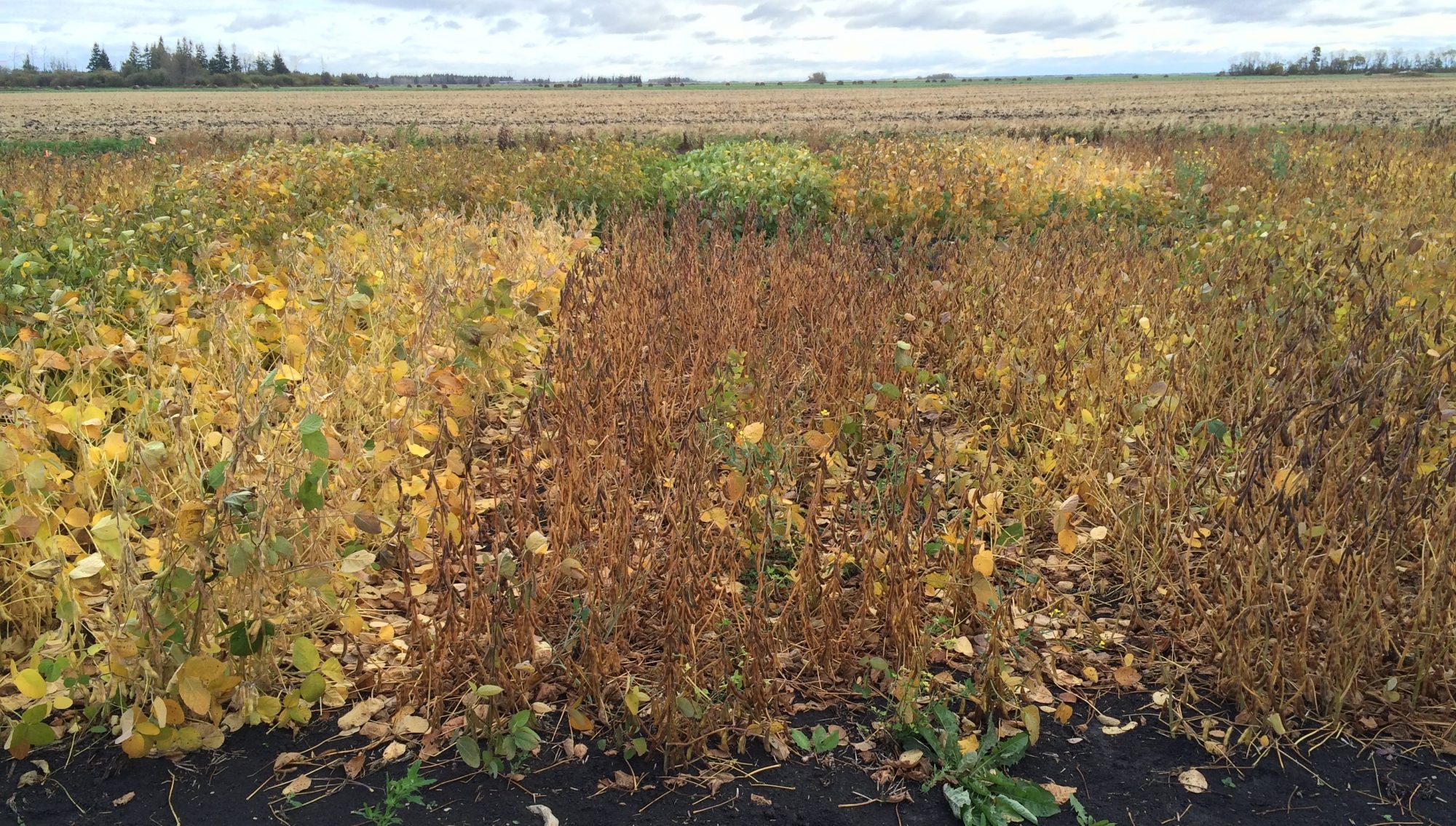May 2018
How late can soybeans be planted in Manitoba?
Many of you are probably more curious about how early we can plant soybeans? Rest assured, that work is being done too.
The purpose of this project, however, was to evaluate the late extent of the soybean seeding window. Soybean seeding deadlines have not been reviewed since 2005, and a lot has changed in that time.
In 2012, only four out of 52 varieties tested in Manitoba would be considered early or short season, maturing in <115 days. Today, nearly half of the 80+ soybean varieties tested are short season. This has been important for soybean expansion in northern and western Manitoba, but also presents the question of how these early-maturing soybeans can be utilized when seeding is delayed in spring?
From 2015–2017, three soybean varieties (very early, early and mid- season) were planted in three seeding windows (late May, early June, mid- June) at Arborg, Portage and Morden. These locations vary in growing season and latitude and also represent three distinct insurance areas.
The seeding dates tested ranged from May 24 to June 24. To evaluate the potential of late-seeded soybeans, data was collected on plant population, plant height, plant productivity, maturity, yield and seed quality. In regards to decision-making, yield and maturity are the most important variables and are presented here.
Soybean maturity (R8) is presented as days + or – the normal first fall frost date (-2°C). At Portage and Morden, this date is September 25 and in Arborg is September 23. Therefore, if the number is <0, the soybeans matured before the fall frost date and if the number is >0, soybean maturity occurred after the normal fall frost date (= higher risk).
All the main factors (seeding date, site-year, variety) significantly affected soybean maturity, in an expected way. Site-year accounted for the majority of the total variation observed and the effect of seeding date sometimes varied by site-year (Figure 1).

At both Portage site-years, soybeans matured within at least one day of the normal frost date regardless of seeding date. At Morden in 2017, all soybeans matured prior to the normal frost date but in 2016, late- and very late-seeded soybeans matured beyond the normal frost date, which can be explained by delayed seeding. As expected, Arborg showed the highest risk with seeding soybeans late; there, soybeans matured 5+ days after the normal frost date and at Arborg in 2017, two of the varieties planted at the very late seeding date did not mature.
Yield of soybeans was most strongly affected by site-year, and ranged from 24–53 bu/ac. The effect of seeding date and variety on yield sometimes varied by site-year. Overall, the very early variety and very late seeding date tended to reduce yield.
Historically, seeding dates and deadlines have considered 80% yield potential an acceptable benchmark. In other words, can late seeded soybeans maintain 80% yield potential compared to a normal seeding date?
To answer this question, we explore the effect of seeding date within site-years (Figure 2). Soybean yield across seeding dates was statistically similar at most site-years, except Arborg in 2016 and 2017, where soybean yield at the very late planting date was reduced to <80% of the normal planting date. Yield was reduced with very late seeding at Portage in 2015 as well, but maintained 84% yield potential compared to the normal seeding date.

In summary, based on soybean maturity and yield potential, Portage and Morden site-years demonstrate good yield potential and little risk for seeding soybeans up to about June 12.
At Arborg, seeding soybeans beyond June 6, we typically saw a decline in yield potential and increased risk for not reaching maturity. Although variety did not account for a large portion of the total variance observed, the varieties each differed in maturity by four days, and a significant interaction with site-year suggests that risk can be mitigated with appropriate variety selection when soybeans are seeded late. An additional note of interest is the soybean yield from the latest seeding dates (June 20–24) tested in this study were 23–51 bu/ac, despite maturing beyond the normal frost date.
The results of this research project will be submitted to MASC to support a review of soybean seeding deadlines. By reviewing the late extent of seeding soybeans in Manitoba, opportunities for cover crops and fall cash crops can also be explored, and crop phenology and productivity data that was collected will provide new insight for soybean production in western Canada.
– Kristen MacMillan
Soybeans seeded May 25, June 1 and June 9 (L – R) in Portage – showing maturity on September 18, 2017.



Soybeans seeded June 6, June 13 and June 20 (L – R) in Arborg – showing maturity on September 26, 2017.




